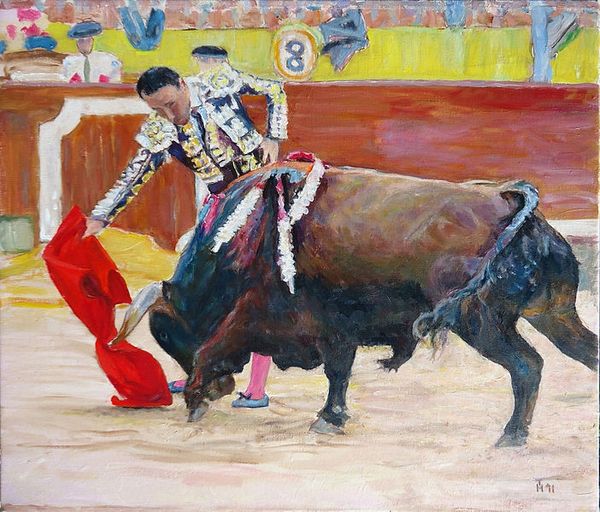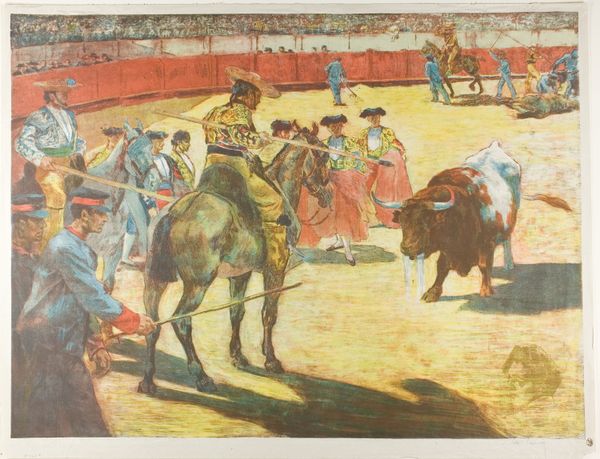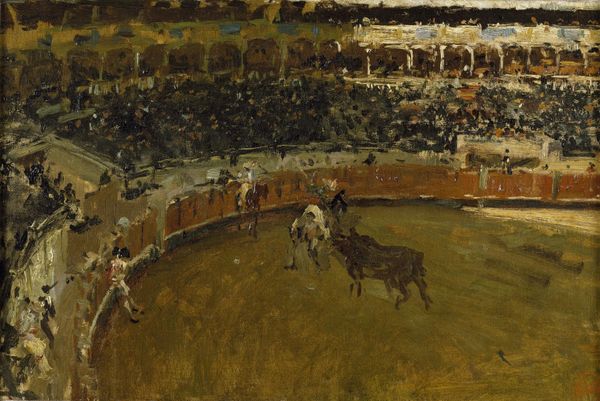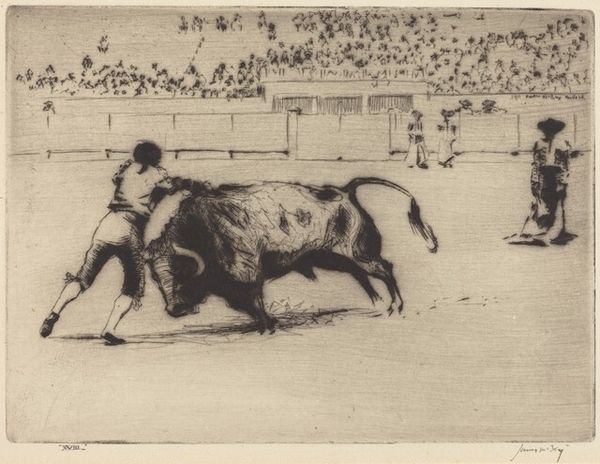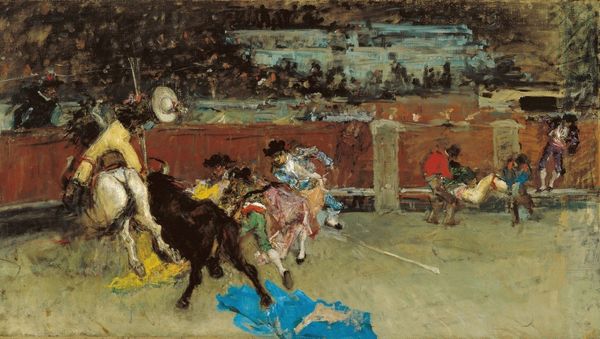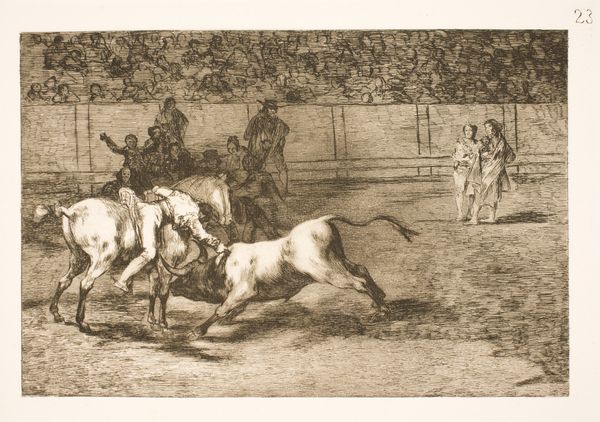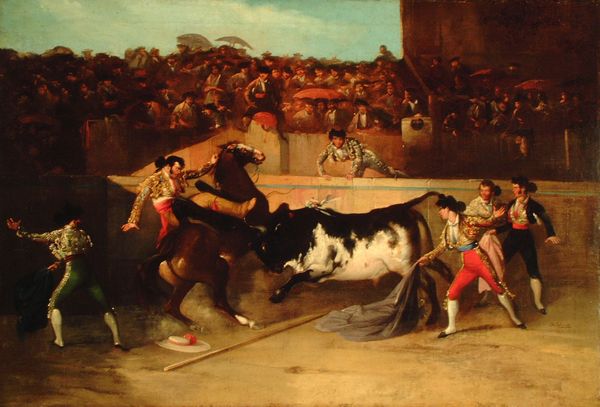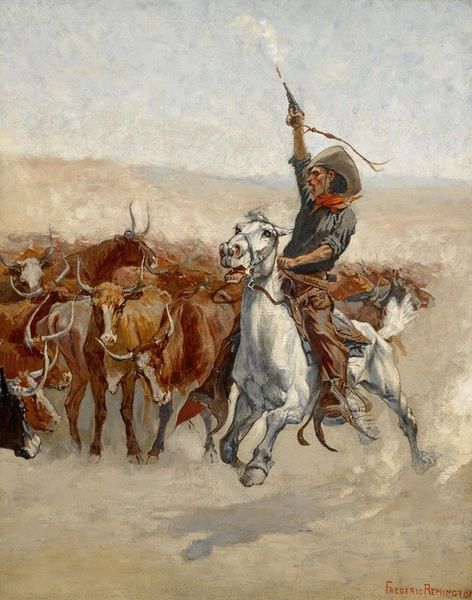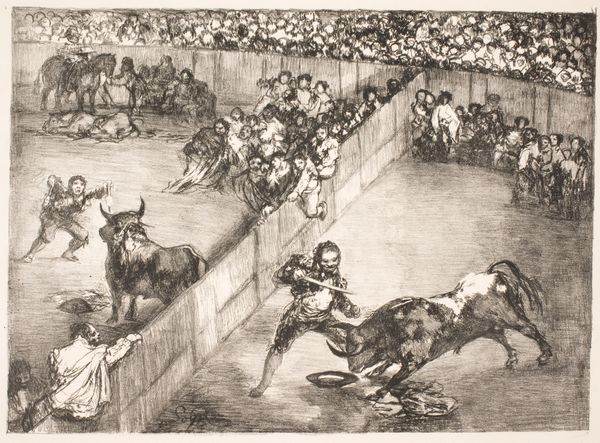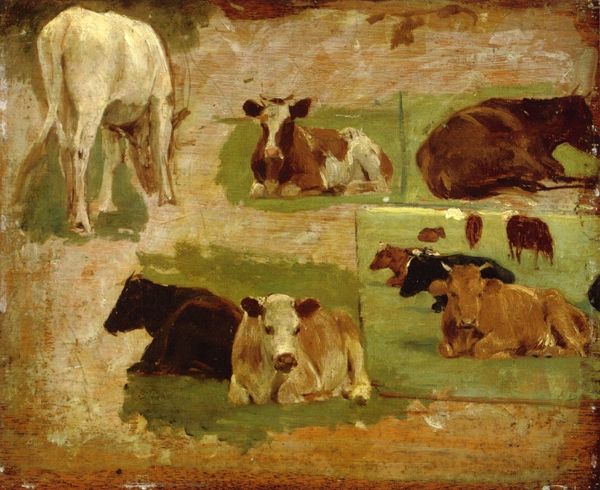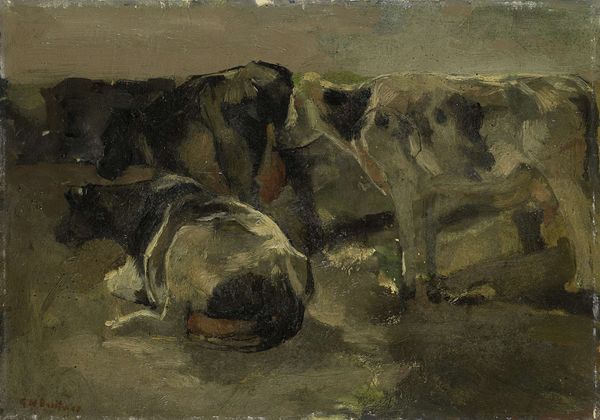
painting, plein-air, oil-paint, impasto
#
figurative
#
narrative-art
#
painting
#
plein-air
#
oil-paint
#
landscape
#
charcoal drawing
#
figuration
#
oil painting
#
impasto
#
genre-painting
#
history-painting
#
academic-art
#
realism
Copyright: Public Domain: Artvee
Editor: This is Ramón Casas's "Bulls," painted in 1886 using oil on canvas. It's incredibly striking, depicting the aftermath of what I presume is a bullfight. There's such stillness in the foreground despite the implied violence. How do you read this work? Curator: From a formal perspective, consider the dramatic contrast in light and shadow. The stark illumination on the sand creates deep shadows cast by the figures. Note the strong diagonal composition leading the eye from the lower right to the upper left, intensifying the spatial relationships. Do you perceive how this structural arrangement influences your reading of the scene? Editor: I see it now! The shadows add to the stillness but also draw attention to the fallen horse, pulling the viewer into the center of the arena and upward. But, is that chaos I see in the composition of the crowd at the top of the painting? It almost fades away into the background. Curator: Precisely. The use of color saturation reinforces this dynamic. The muted palette of the arena contrasts with the relative brightness of the crowd. Examine the surface texture created by the impasto application of the paint. How does that tactility affect your viewing experience? Editor: It makes it feel… rough, I guess. Not polished or refined. Which adds to the realistic effect of this horrible scene. Thank you for guiding me in my observations! Curator: You're most welcome. Analyzing such choices enriches our comprehension, illustrating how formal elements amplify the content. By examining paintings closely, we gain an improved perspective of the painting's impact on the observer.
Comments
No comments
Be the first to comment and join the conversation on the ultimate creative platform.
